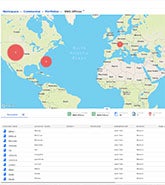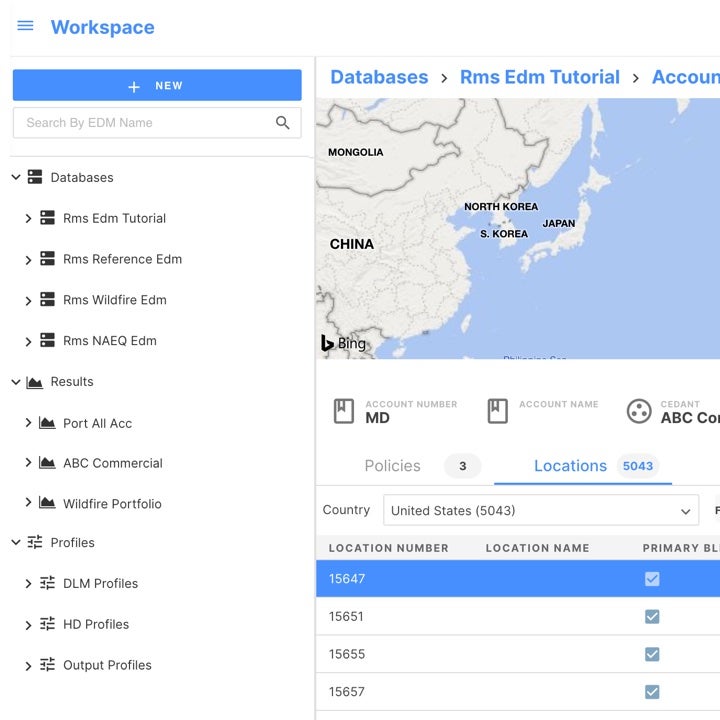Analyzing recent insurance industry outlooks, such as the 2021 Insurance Outlook published by Deloitte just before the start of the year, a core theme emerges. The industry is looking to speed up its push towards digital transformation.
From migration to the cloud to investment in data analytics, 95 percent of those surveyed were already accelerating or looking to speed up their digital transformation plans. One driver was to build operations resilience after COVID-19. Product innovation, addressing compliance and reporting requirements, and reducing expenses to free up investment funds were all high on the industry’s wish list.
A crucial piece of the transformation puzzle requires businesses to have tools and systems in place to provide a single view across a broad set of risks. And then, they ensure relevant data analytics and risk insights can be shared with all employees who need it.
To increase efficiency, innovation, and collaboration, it is vital that risk decision-makers within a business are empowered with the insight to do their job efficiently. But this valuable risk insight can be restricted within certain teams or is hard to generate because it requires the use of multiple modeling systems.
Unifying Your View of Risk
Transformation to a single, shared view of risk can be achieved by using a risk management platform that allows exposure, modeling, financial analysis, portfolio management, reporting, and analytics to come together with applications designed for different business roles.
When RMS® launched the Risk Modeler™ application in 2020, clients started on their cloud migration journey, benefiting from the storage, computing power, and security offered by the RMS risk management platform, Risk Intelligence™. With access to the latest risk models all in one application, clients quickly generated deep risk insight, running multiple models across portfolios, or calibrating and adopting a new model side-by-side with a previous release.
Risk Modeler also keeps evolving, with clients benefiting from new functionality with each version. Here are two areas of focus for the latest Risk Modeler release.
Ensuring Quantification of Exposure Losses Across Perils and Regions
There are some key factors within the risk management cycle that insurers need to manage to ensure profitability. For a primary insurer it is vital to have the correct capacity utilization and make informed decisions to improve underwriting and reinsurance strategies – to provide answers to the following questions:
- How much capital is needed to meet internal and regulatory requirements?
- Can we allocate capital to regions and lines of business more effectively?
- Is the reinsurance that we’re currently purchasing providing the cover that we need?
Gaining a comprehensive view requires understanding risk across all regions and perils – and different model frameworks. The power behind Risk Modeler is the ability to combine your risk into one unified view. This is accommodated by being able to simulate event losses across all these model frameworks – high definition (HD), Detailed Loss Models (DLM), and Aggregate Loss Models (ALM®).
Risk Modeler uses a grouping engine to deliver aggregate losses for exposure with multi-peril policies into a single loss curve. This newly available grouping functionality makes it possible to simplify and unify data from different model frameworks.
Importance of Aggregate Loss Models
Risk Intelligence already offers global modeling coverage from the extensive range of RMS HD Models™ and DLM, and this now extends to ALM. Why are ALM so important to clients? How are these models used?
Aggregated exposure data is widely used across major markets – in countries and regions such as Japan, across the Caribbean, and in Central and South America. Many insurance companies collect and compile aggregate information from their insureds that needs to be modeled, or the data needs to be provided to their reinsurance partners for modeling.
Aggregate loss models help facilitate this and can be run with minimum input – without building characteristics or policy information and using inputs such as total insured value (TIV), insured limits by postal code, or CRESTA zones. ALM play a vital role in many markets that are developing their exposure data capture capabilities or where aggregate data is deemed sufficient for the task at hand.
Risk Modeler users can fully analyze and manage aggregate risk, including:
- Portfolio analysis: Understand the level of peril risk for a portfolio or a collection of portfolios (master portfolio)
- Treaty analysis: Understand the level of peril risk for a treaty or a collection of treaties in detail and across different scales, such as correlation of risk, attritional losses, and tail risks including uncertainties
- Capital allocation: Adequately allocate capital and comply with regulatory requirements such as Solvency II
- Pricing and risk selection: Use model outputs, data products and/or services to do pricing and risk selection for underwriting at a portfolio level
There is an ongoing need across the (re)insurance industry to have aggregate models embedded into risk management platforms. As the market matures in its ability to provide more granular exposure data, Risk Modeler users can then switch away from aggregate modeling and use a more granular modeling approach.
Using a risk management platform and applications such as Risk Modeler ensure that your business has a modeling solution that is in step with the evolution of exposure data, so you can continue to move ahead with your digital transformation journey.
Join us at this year’s all-virtual Exceedance® conference (May 4-6) to find out much more about the latest Risk Modeler developments. Click here for your free complimentary registration, or email sales@rms.com to talk to an RMS representative and learn more about Risk Modeler.








